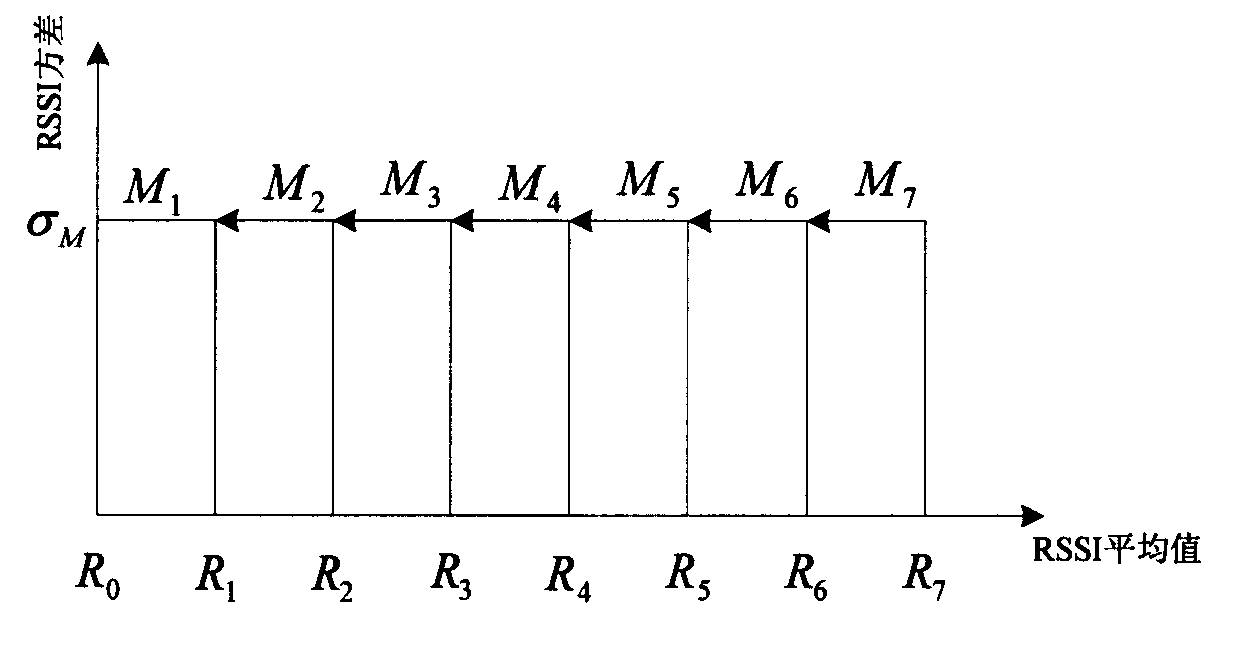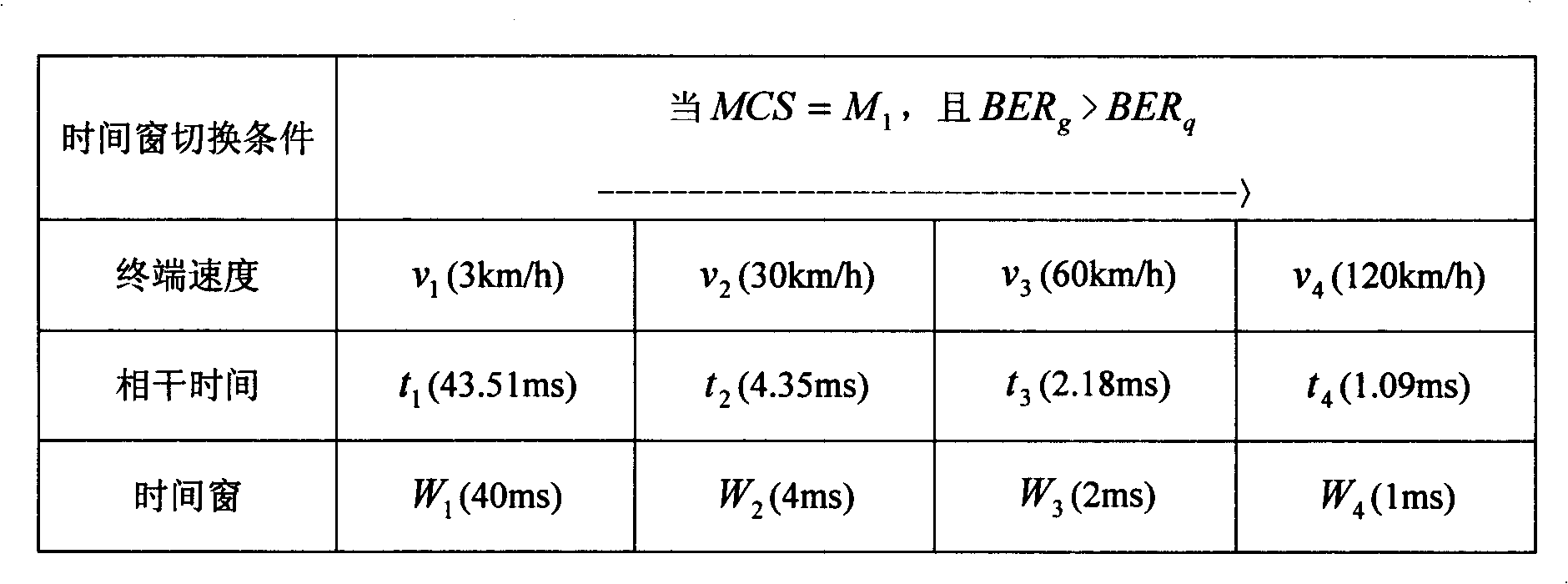A self-adapted modulation and encoding method for orthogonal frequency division multiplexing system
An adaptive modulation and orthogonal frequency division technology, applied in the field of modulation and coding, can solve problems such as ineffectiveness, increase in bit error rate, waste of system capacity, etc., and achieve the effect of improving spectrum efficiency, reducing possibility, and enhancing effectiveness
- Summary
- Abstract
- Description
- Claims
- Application Information
AI Technical Summary
Problems solved by technology
Method used
Image
Examples
Embodiment Construction
[0036] figure 1 It is a flowchart of the adaptive modulation and coding method described in the present invention, comprising the following steps:
[0037] Step 110, set an initial time window parameter k=1, usually choose the one with the largest window length as the initial time window.
[0038] Step 120, get the adaptive time window W according to the time window parameter k k , k ∈ 1, 2, ..., K.
[0039] time window W k , k=1, 2,..., K respectively correspond to different terminal moving speed v of the terminal k , k=1, 2,..., K, can be determined by estimating the channel coherence time, the coherence time t k =λ·v c / (v k f), k=1, 2, . . . , K. where λ is the empirical coefficient, v c is the speed of light, v k is the mobile speed of the terminal, and f is the carrier frequency.
[0040] When the carrier frequency is 3.5MHz and the mobile speed of the terminal is 3km / h, 30km / h, 60km / h, 120km / h, the corresponding channel coherence times are 43.51ms, 4.35ms, 2.1...
PUM
 Login to View More
Login to View More Abstract
Description
Claims
Application Information
 Login to View More
Login to View More - R&D
- Intellectual Property
- Life Sciences
- Materials
- Tech Scout
- Unparalleled Data Quality
- Higher Quality Content
- 60% Fewer Hallucinations
Browse by: Latest US Patents, China's latest patents, Technical Efficacy Thesaurus, Application Domain, Technology Topic, Popular Technical Reports.
© 2025 PatSnap. All rights reserved.Legal|Privacy policy|Modern Slavery Act Transparency Statement|Sitemap|About US| Contact US: help@patsnap.com



